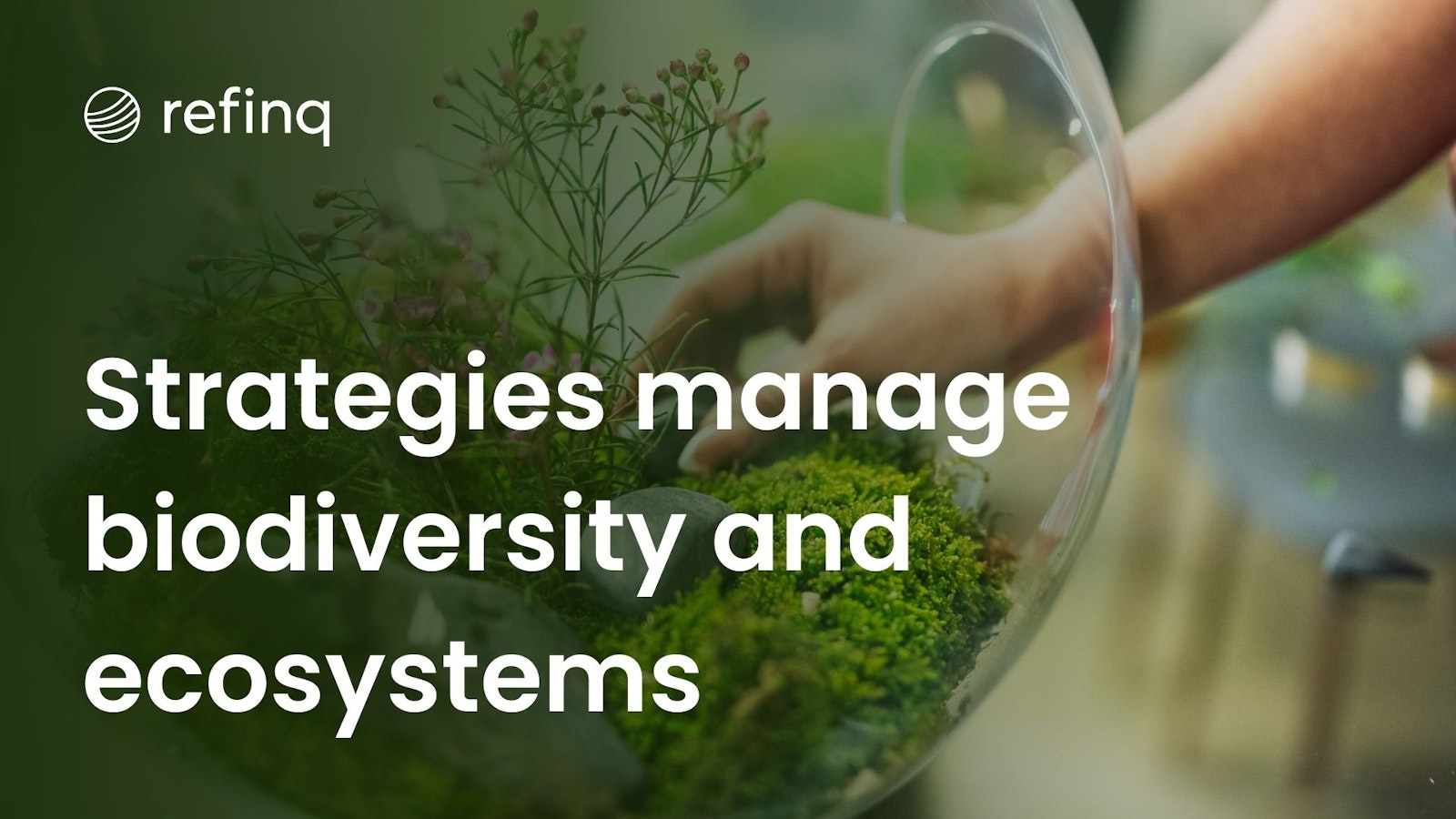

As businesses face increasing pressure to align with sustainability goals and regulatory frameworks, managing biodiversity and ecosystem risks has become a critical focus. Companies are now expected not only to mitigate their environmental impact but also to take proactive steps toward ensuring the resilience of ecosystems. This is particularly important as governments and regulators around the world intensify scrutiny on biodiversity and nature-related risks. Corporate strategies focused on these risks are essential for long-term sustainability and compliance with emerging regulations like the Taskforce on Nature-related Financial Disclosures (TNFD) and Corporate Sustainability Reporting Standard (CSRD).
The integration of advanced tools such as refinq is helping businesses manage biodiversity and ecosystem risks more effectively. By utilizing real-time risk evaluations and forecasting environmental impacts, refinq empowers businesses to create actionable strategies that reduce nature-related risks and align with global sustainability standards.
In this article, we will discuss key corporate strategies for managing biodiversity and ecosystem risks, exploring practical solutions that businesses can adopt to comply with regulatory frameworks and ensure sustainability.
Biodiversity loss and ecosystem degradation pose significant risks to businesses, impacting everything from supply chains to operational resilience. Biodiversity refers to the variety of life on Earth, and its loss can disrupt vital services such as pollination, water filtration, and climate regulation. Ecosystem risk involves the potential for environmental changes—such as deforestation, soil degradation, and species extinction—to affect business activities.
As businesses increasingly recognize the importance of nature-positive strategies, they are implementing comprehensive risk management frameworks to assess and mitigate biodiversity risks. This is crucial not only for compliance with regulatory requirements but also to protect their long-term viability in a world where environmental factors are a growing source of financial risk.
refinq offers businesses the tools needed to understand their exposure to these risks through advanced biodiversity risk assessments. These tools help businesses identify and mitigate environmental impacts, ensuring both compliance with TNFD and CSRD and the adoption of nature-positive strategies.
Several factors are driving the need for effective biodiversity and ecosystem risk management in the corporate sector:
By using tools like refinq, businesses can assess the biodiversity risks in their supply chains and ensure that their operations are aligned with sustainability goals.
The first step in managing biodiversity and ecosystem risks is identifying and assessing potential threats. A robust risk assessment framework allows companies to quantify the impacts of environmental changes on their operations and financial performance.
Effective biodiversity risk assessments involve:
By utilizing geospatial analysis and machine learning, refinq helps companies forecast how environmental changes may impact their assets, enabling them to make informed decisions about mitigation strategies.
Once risks are assessed, businesses should develop and implement biodiversity action plans (BAPs) that outline strategies to reduce their environmental impact. These plans should include specific, measurable targets for improving biodiversity and ecosystem health.
Key components of BAPs include:
refinq supports the development of effective BAPs by providing businesses with tools to track their environmental footprint and identify areas for improvement. This data-driven approach ensures that businesses can implement actionable, science-based strategies that contribute to biodiversity conservation.
Nature-based solutions (NbS) are increasingly seen as an effective way for businesses to address biodiversity and ecosystem risks while contributing to environmental sustainability. NbS are strategies that work with nature to address environmental challenges, such as using wetlands to filter water or planting trees to capture carbon.
Incorporating nature-based solutions into business strategies can help companies:
refinq can help businesses evaluate the potential for nature-based solutions in their operations, providing data on areas where these solutions may be most effective in mitigating environmental risks.
Managing biodiversity and ecosystem risks requires collaboration with a range of stakeholders, including local communities, NGOs, governments, and industry groups. Engaging stakeholders ensures that biodiversity conservation efforts are aligned with local needs and global sustainability goals.
Collaboration strategies include:
refinq supports stakeholder engagement by providing businesses with detailed environmental data and risk assessments that can be shared with stakeholders to build trust and align sustainability goals.
Ongoing monitoring is essential for tracking progress toward biodiversity goals and identifying any emerging risks. Regular reporting on biodiversity efforts ensures that companies remain accountable for their actions and can adjust strategies as needed.
Monitoring and reporting strategies include:
By leveraging platforms like refinq, businesses can generate audit-ready reports that comply with these reporting frameworks, ensuring that their sustainability efforts are measurable and verifiable.
While there are clear benefits to integrating biodiversity and ecosystem risk management into corporate strategies, businesses face several challenges, including:
refinq helps businesses overcome these challenges by providing access to reliable, real-time environmental data that simplifies risk assessments and ensures compliance with regulatory standards.
As biodiversity loss and ecosystem degradation become increasingly recognized as critical business risks, corporate strategies for managing these risks are essential for long-term sustainability. By adopting comprehensive biodiversity action plans, implementing nature-based solutions, and collaborating with stakeholders, companies can mitigate their environmental impact and contribute to the preservation of the planet’s ecosystems.
Platforms like refinq play a pivotal role in helping businesses navigate the complexities of biodiversity risk management, offering data-driven insights and tools that enhance decision-making and ensure regulatory compliance. By leveraging these tools, companies can build more sustainable, resilient operations that support biodiversity and ecosystem health.